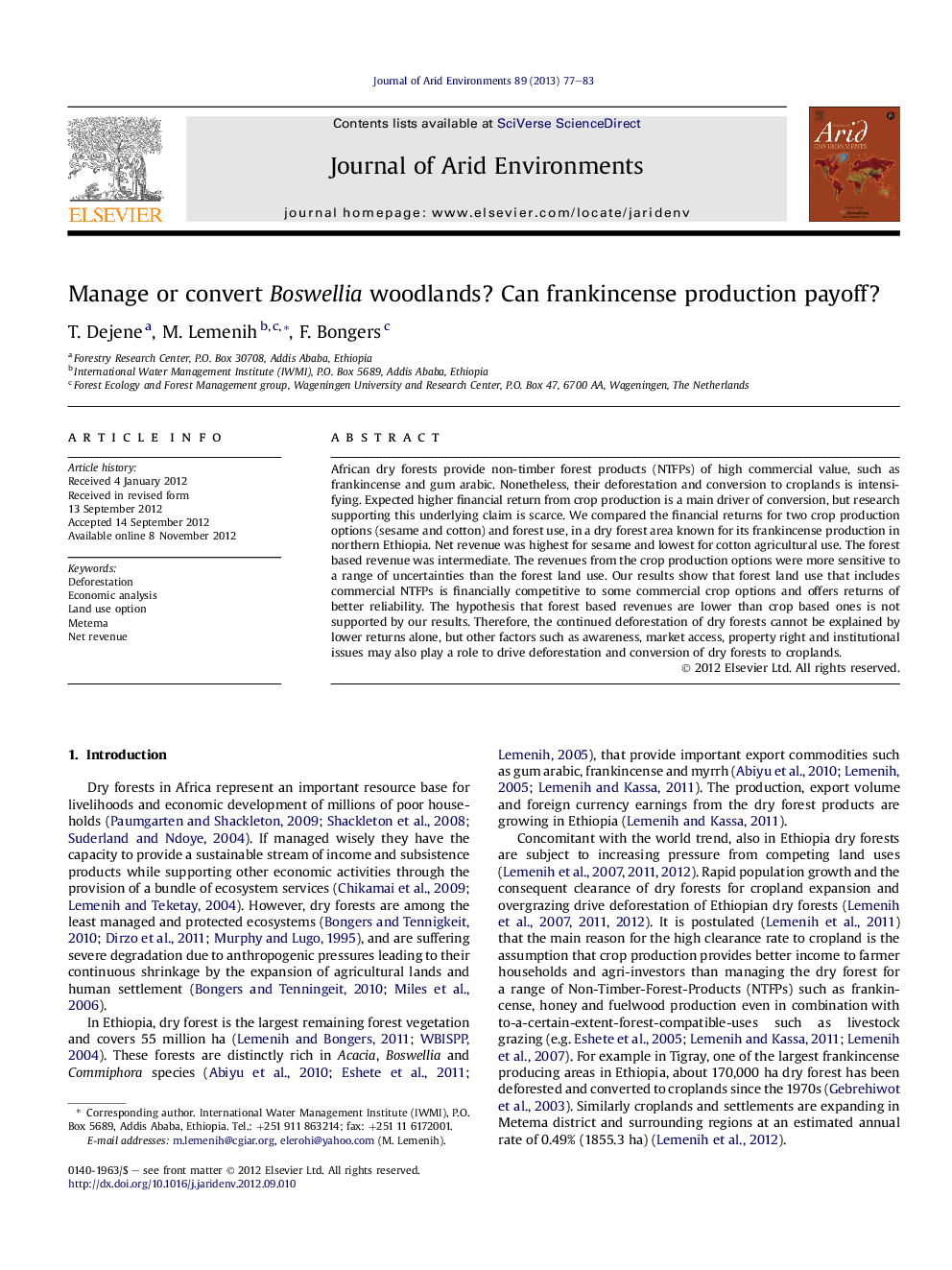| Article ID | Journal | Published Year | Pages | File Type |
|---|---|---|---|---|
| 4393234 | Journal of Arid Environments | 2013 | 7 Pages |
African dry forests provide non-timber forest products (NTFPs) of high commercial value, such as frankincense and gum arabic. Nonetheless, their deforestation and conversion to croplands is intensifying. Expected higher financial return from crop production is a main driver of conversion, but research supporting this underlying claim is scarce. We compared the financial returns for two crop production options (sesame and cotton) and forest use, in a dry forest area known for its frankincense production in northern Ethiopia. Net revenue was highest for sesame and lowest for cotton agricultural use. The forest based revenue was intermediate. The revenues from the crop production options were more sensitive to a range of uncertainties than the forest land use. Our results show that forest land use that includes commercial NTFPs is financially competitive to some commercial crop options and offers returns of better reliability. The hypothesis that forest based revenues are lower than crop based ones is not supported by our results. Therefore, the continued deforestation of dry forests cannot be explained by lower returns alone, but other factors such as awareness, market access, property right and institutional issues may also play a role to drive deforestation and conversion of dry forests to croplands.
► We compared net revenues from dry forest and two crop production options. ► We found that revenue from NTFPs of dry forest is comparable to crop production. ► Nonetheless deforestation seems to persist due to other factors than revenue. ► These factors may include awareness, property right and market access. ► These problems, unless addressed, will drive deforestation of dry forests.
